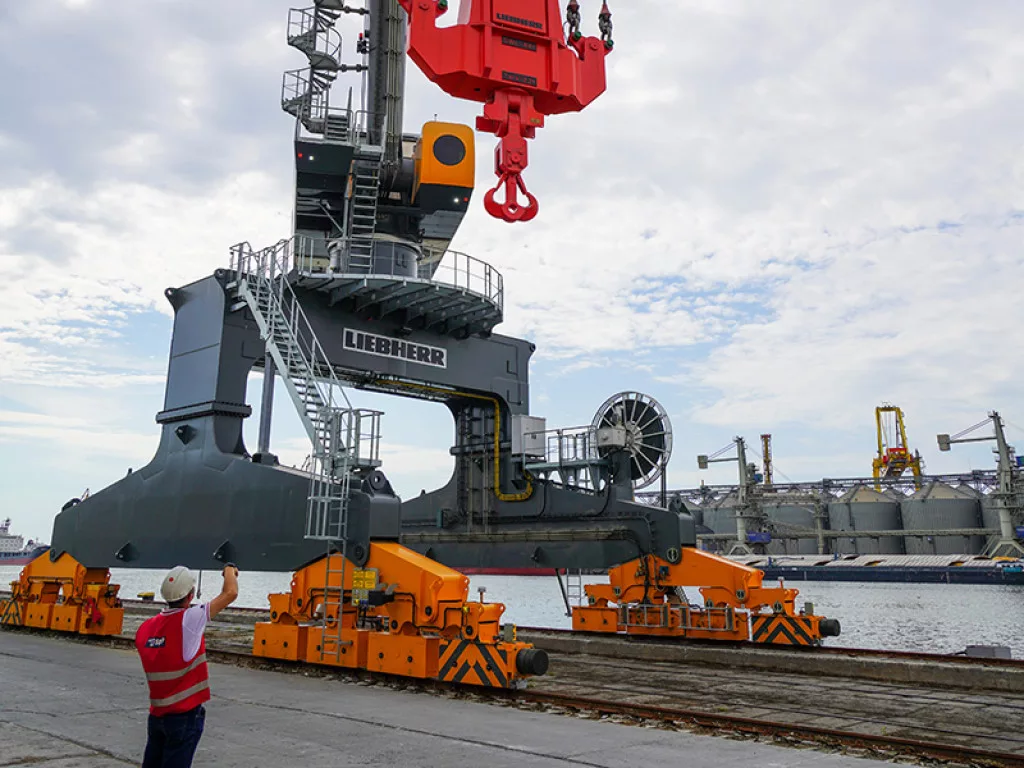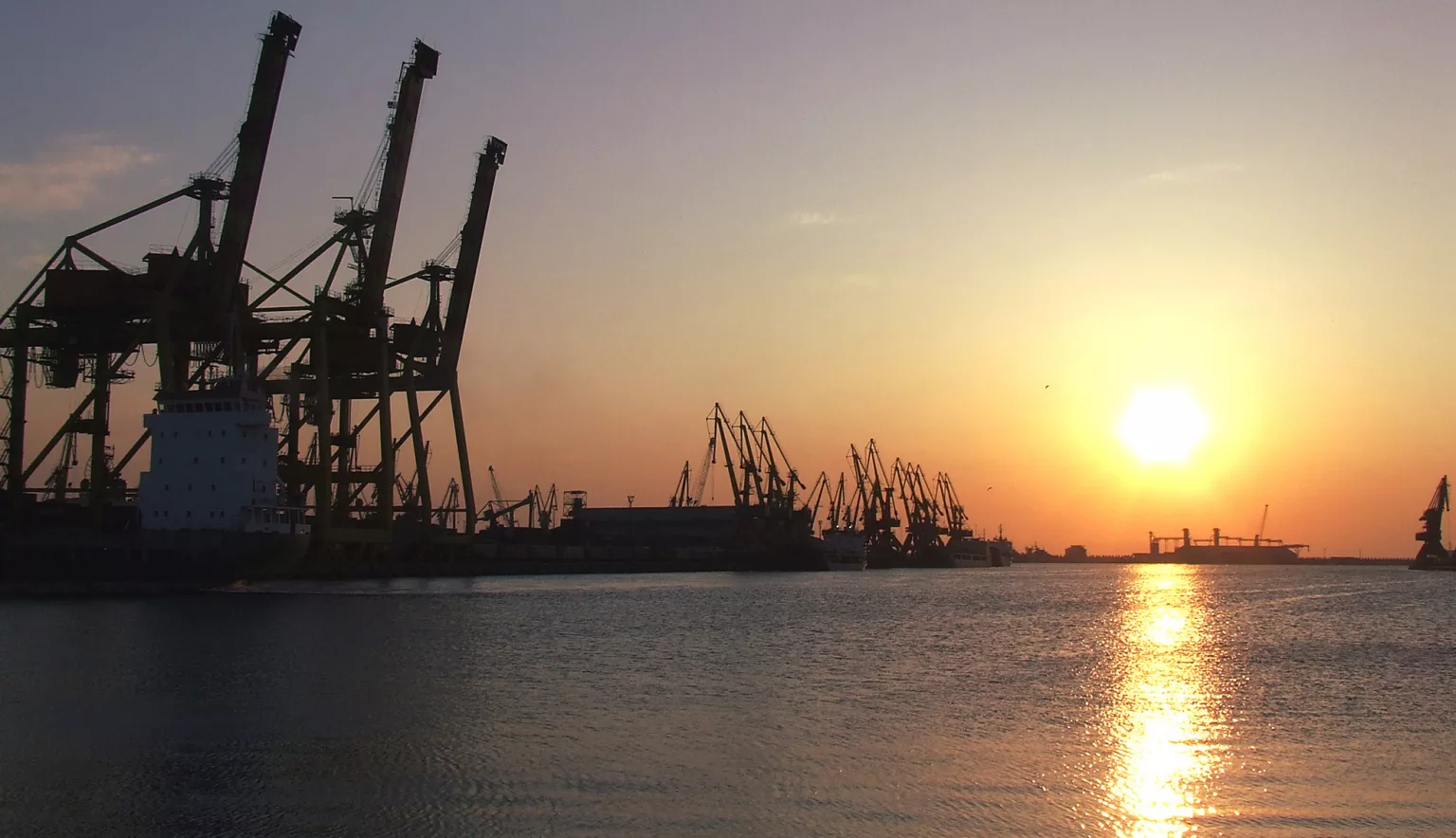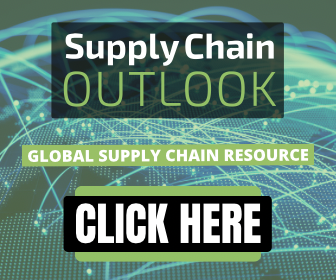As the leading operator at Europe’s fourth largest port, SOCEP have their sights set on expansion. We discuss resiliency and embracing modernisation with General Director, Dorinel Cazacu.
REDEFINING TRADE IN THE BLACK SEA
On the Western coast of the Black Sea, Romania’s Port of Constanța has been a nexus of trade since bygone millennia, dating back to the rule of the Roman Emperor that lent the city its name. Strategically positioned as both a maritime and river port, Constanța benefits as the gateway to three pan-European transport corridors. Since the late 19th century, the port has been shaped by a ceaseless tide of modernisation. This still rings true today, as intrinsically linked to the history and position of the port itself, are the operators that work in this dynamic arena.
“Now, we are in the process of modernisation, as we are looking for the new youth – to breathe new life into this container terminal,” comments Dorinel Cazacu, General Director at SOCEP. A proudly Romanian enterprise, SOCEP have been a mainstay of Constanța port operations for the past 30 years, during which time SOCEP have cemented a reputation as a leading Black Sea port terminal operator.
Cazacu himself found his way to the helm of operations at SOCEP following a variety of roles that piqued his logistical interest in the maritime industry.
“I entered this business for the first time in 2014, after having been involved in many other industries connected with logistics, and supply chain, but also in manufacturing and distribution and many other fields,” he tells us.
Cazacu’s first taste of the marine sector came within manufacturing, where he was responsible for coordinating sales and distribution across the region. When an opportunity arose at SOCEP, the role within supply chain logistics was a natural progression that for Cazacu, represented a satisfying ‘completion’ of his career. As he comments, “I realised the importance of the supply chain within a business in the new era of industry,” and subsequently embarked on his first mandate at the company.
“To put it simply – we are going for the cargo, we are not waiting for it to come to us.”
Dorinel Cazacu, General Director
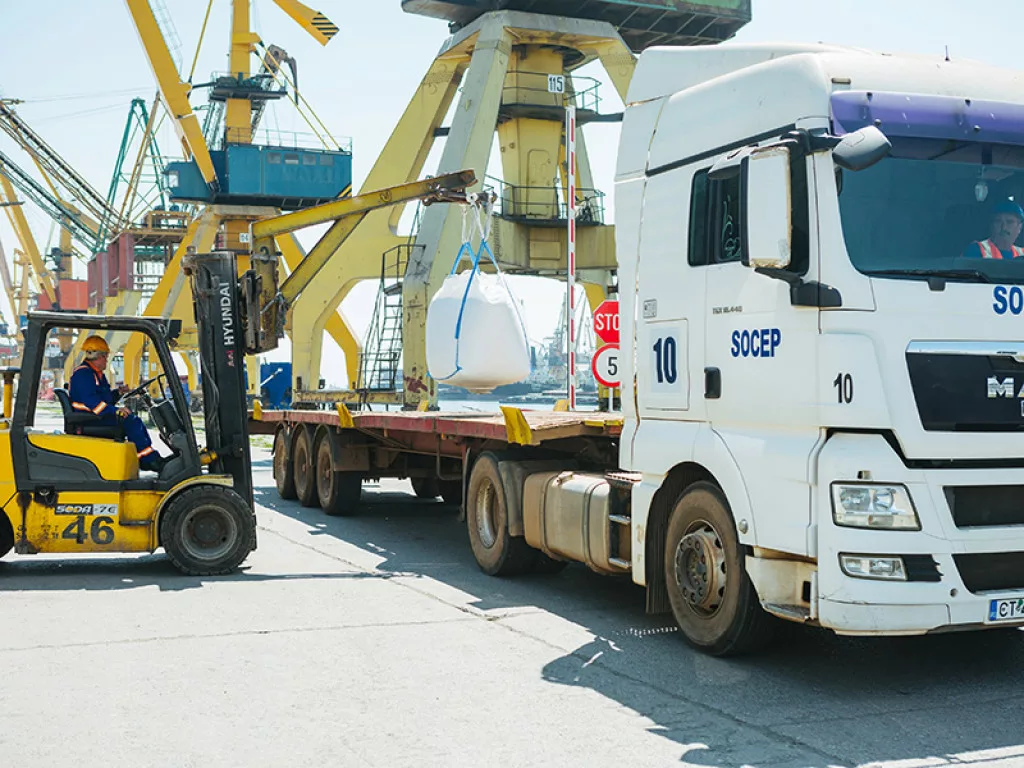
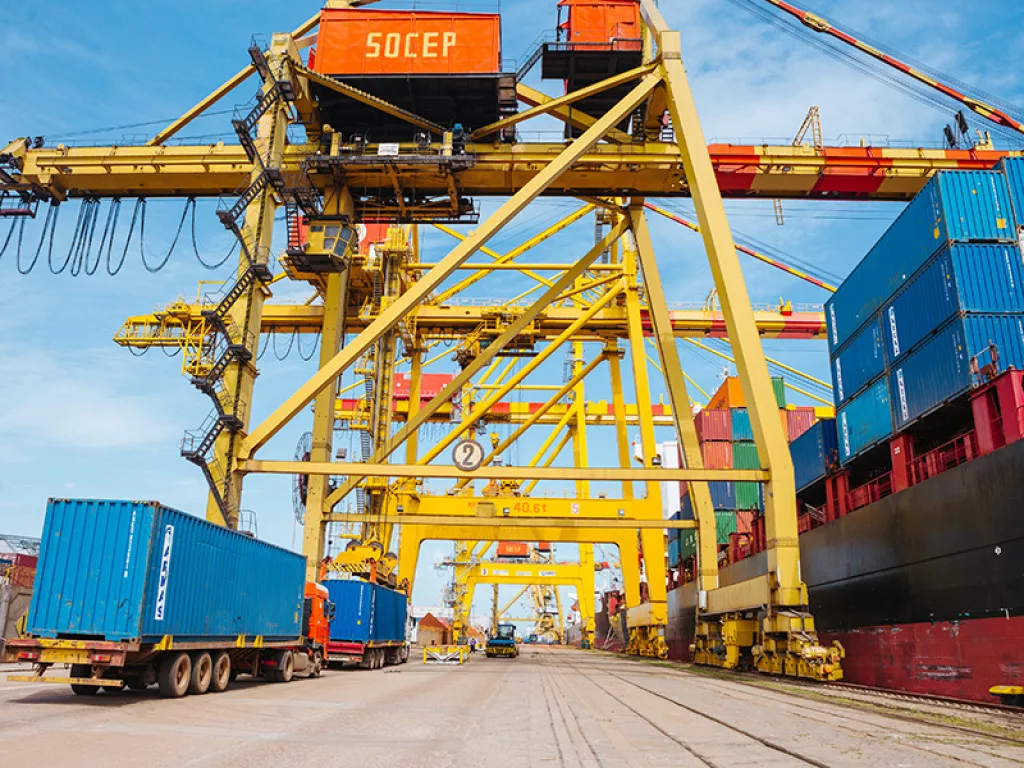
A RELIABLE PARTNER
With an annual turnover in the region of €14.5-15 million, SOCEP is the only operator from Constanța to be listed on the Romanian stock exchange. At present, SOCEP operate two principal terminals within the Northern Port of Constanța, with plans for expansion and diversification firmly in place.
“We have specialised berths for a container terminal, and those specialised for general cargo. By general cargo, I mean, bulk and break bulk. So, we can cover almost all types of cargo that transit through the Port of Constanța,” states Cazacu.
“We operate our general cargo terminal, and a container terminal. Within the general cargo terminal, we are developing a grain terminal, and now we are also involved in special and project cargo. As such, SOCEP is remaining active in all relevant kind of related activities with the port operation,” he explains.
The development of this new grain terminal represents a €33 million investment in total. “Now we are developing the first phase of this investments, which is €20 million. Our highly modern grain terminal is going to be operational by November – December this year,” Cazacu informs us.
Although the port’s smallest container operator, Cazacu is confident that the relatively small size of SOCEP’s operations can only be beneficial, in allowing greater agility. As Cazacu quips, “we are big enough for several clients’ needs, and much more flexible.”
“In fact, in terms of numbers of employees, SOCEP is one of the biggest port operators in the Port of Constanța, offering us the chance to benefit from the extensive pool of related competencies and skills. If we are talking about our areas of expertise and the areas of business that are covered by SOCEP, we are the most complex,” Cazacu informs us. Indeed, SOCEP’s workforce currently numbers around 400 permanent employees, with a varying number of approximately 40 temporary workers bought on each day.
Cazacu is keen to stress what a valuable asset SOCEP’s workforce are, as the essential backbone of all operations. SOCEP’s employee retention rate and the loyalty that employees showcase within their tenure at the company, reflect the appreciative working environment that Cazacu endeavours to enforce.
“I want people to be happy and proud that they are part of our transformation as we are talking about investments – without our people, you can’t do anything.
“I would love to convince new people to come to work here, because it’s very telling that more than half of our employees have been with SOCEP for over 20 years. This is capital that I need to keep, whilst also providing younger generations coming to work here the warranty that they are coming to work at a company who are taking steps into the future,” Cazacu comments.
ONGOING DEVELOPMENTS
Indeed, it is this backbone of staff who will undergo and effectively action the changes that SOCEP wish to drive within their organisation through their investment strategy– primarily within digitalisation and sustainable development – as a company that takes pride in its people, culture, and the environment.
“We are working in the digitalisation era, and we need to have the necessary processes. So, we are looking for modern technologies such as automatic processing – mostly we are focused on the medium term on these actions talking about sustainability and growing in this way,” Cazacu comments. “We are always thinking about our carbon footprint and so are looking to modernise our equipment.”
In terms of sustainability, SOCEP endeavour to minimise the movements behind operations through optimisation of productivity.
“There is a new trend with the sustainable economy where everybody is looking to reduce the transport distances – we have some objectives and plans in this area for the future of SOCEP.”
“We are looking for schemes that are going to improve the productivity in the terminal, that means less movement to manipulate the cargo. It’s a specific KPI for a container terminal, the average number of movements per container. It’s an objective for everybody and also for SOCEP in order to reduce this average number of movements – because this translates to efficiency – less oil consumption and less emissions. This is the first step,” he continues.
An example of this are SOCEP’s ongoing plans to extend their actual portfolio of businesses.
For example, SOCEP would consider venturing into edible oil logistic and supply chain business through new partnerships and developing a terminal to do so. Logistically speaking, it is far more efficient to transport the oil itself, as opposed to the seeds used to manufacture it. “We are looking to integrate our agro-terminal with other related operations and businesses and we are open for discussions with potential reliable partners.”
Nevertheless, hurdles prevail that hamper such developments. Whilst the intentions are there, progress is difficult with limited resources. As such, support is necessary, in the form of partnerships and investments that are reflective of collaborative progress.
“We are looking to make investments, but first, in all honesty, we need grants. In the national programme of development there is an ongoing discussion and we do believe that the strategy of the EU will help us in order to access this, otherwise it is difficult, and we do need some support in order to change and modernise the equipment,” discusses Cazacu. “This requires investment.”
Aside from this, challenges beyond SOCEP’s control have a major effect, such as the deterring cost of tariff charges within the Black Sea region as a whole.
“If we compare our port with Ukraine, for example within grain, since we are now making a modern grain terminal, at Constanța the tariffs for grain in a silo are about less than 36-40 percent compared to tariffs from Ukraine. This is a policy for the whole port of Constanța that’s tied to its history, but I think that this is going to change because the cost creates a pressure. In the near future, there will be an alignment of the tariffs between the ports,” Cazacu explains.
Romania’s geographical location is another factor that SOCEP seek to overcome through partnerships in more strategic positions related to cargo. “We are currently having discussions regarding different projects with a potential partner, to use and identify the synergies between SOCEP as a terminal and a port operator in the hinterland of the port of Constanța, in those locations that are closer to the cargo – we do estimate that we are going to see future volumes,” Cazacu observes.
“We will not stay in the position that we are – we are looking to make the step to move forward and meet the cargo.”
“We act responsibly towards the environment, our customers, employees, business partners, and shareholders. We promote national culture and identity, being more creative and closer to the field in which we operate”
SOCEP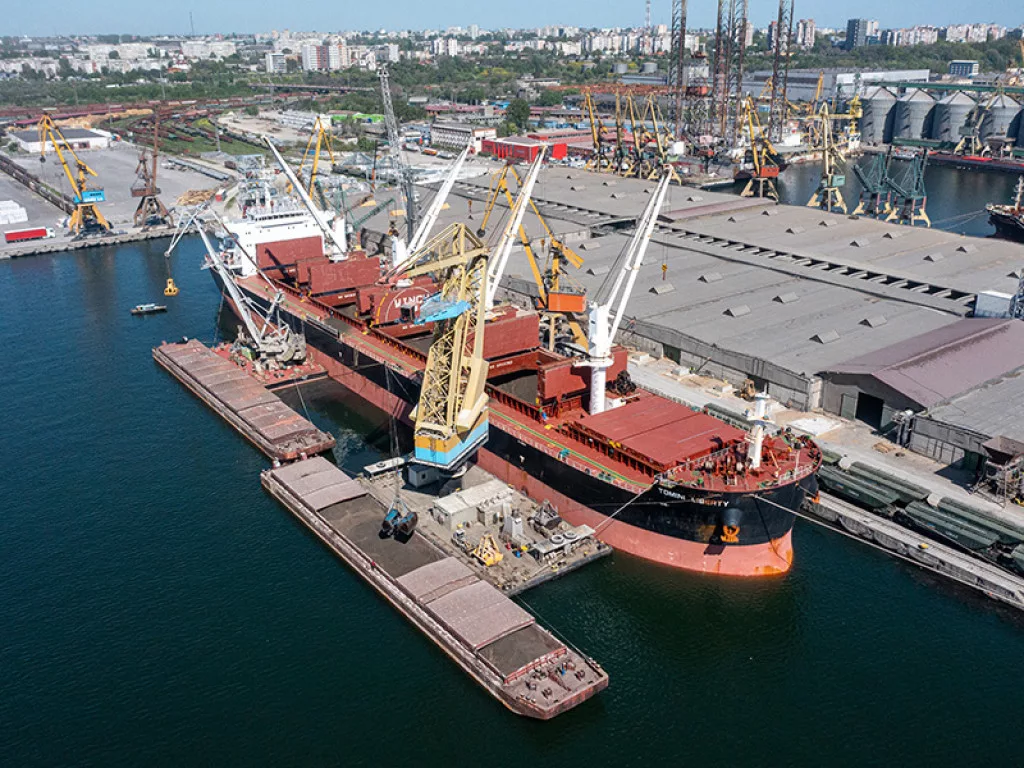
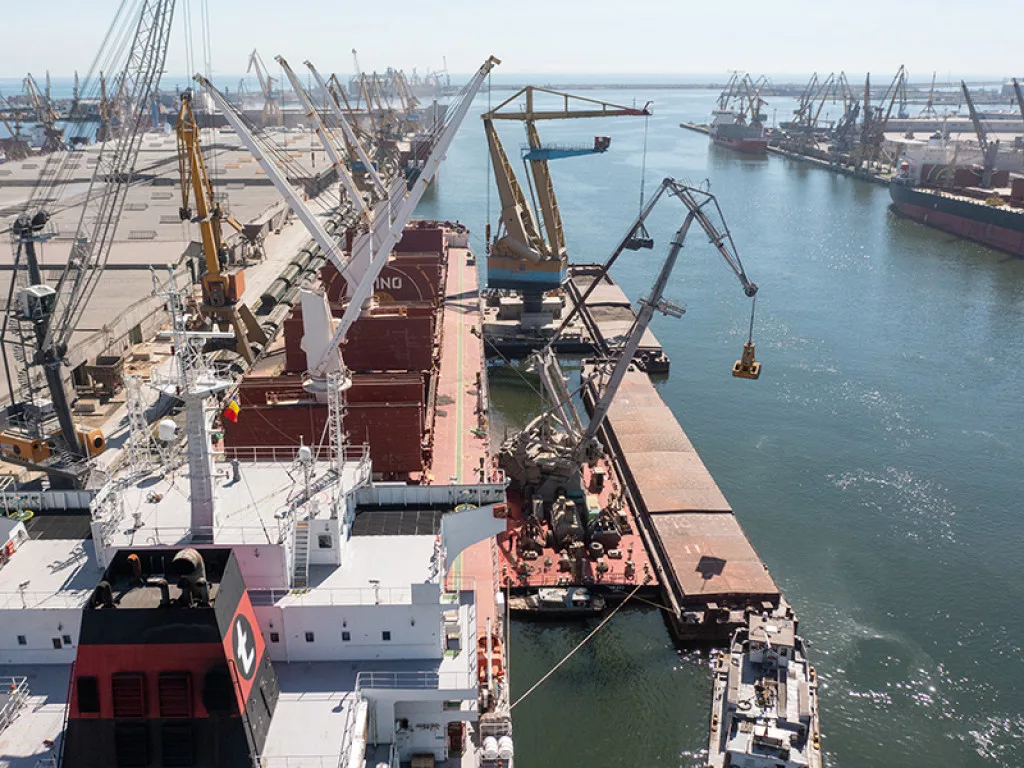
LOOKING AHEAD
Turning to talk of the future, SOCEP are looking to venture beyond the confines of Constanța.
“Our strategy is to get out of the box – we are going for the cargo; we are not waiting for it to come to us,” Cazacu states.
“We will also continue to develop our container terminal – it’s a continual investment process which started five years ago. Up to now we have invested approximately €11 million, and we will continue with this plan with the changing and modernisation of a new fleet following the sustainability principle.”
For Cazacu himself, his work at SOCEP is far from finished. “Now, I am in my second mandate of three years at SOCEP. My intention is to continue with this since there is plenty to be done, especially after the pandemic, which made us realise that a lot of changes that are going to occur within logistics and the supply chain, including the ‘cold chain’, which is not very well-developed.
“The world is going to rearrange to answer the new given situation and demands.”
Cazacu ends with his future vision for the company that he hopes SOCEP to become.
“I want to be sure that we at SOCEP are open. Our main goal is not just to keep the company alive, but to revamp somehow and make SOCEP more resilient. We need to be part of the future with those who are one step ahead.”
